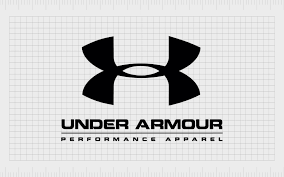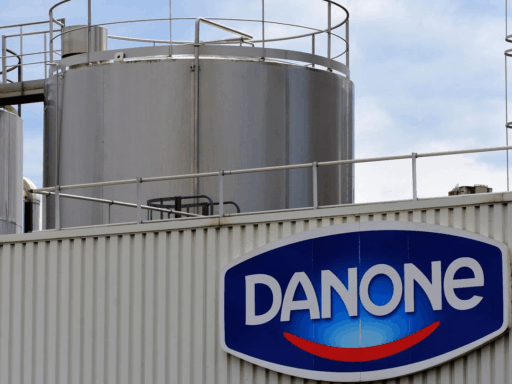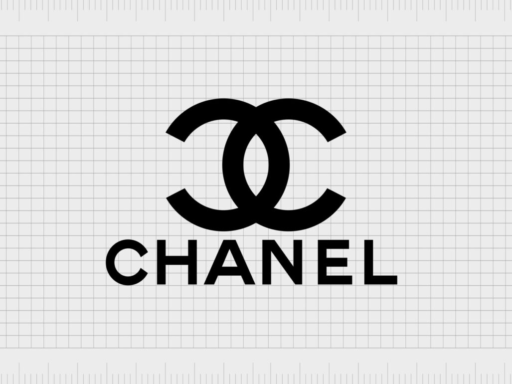Under Armour has solidified its position as a leader in sustainable athletic apparel, implementing innovative strategies to minimize its environmental impact. The company’s 2023 Sustainability & Impact Report underscores its commitment to reducing greenhouse gas (GHG) emissions, embracing circular economy principles, and enhancing supply chain efficiency through technological advancements. These initiatives align with global climate action frameworks, including the Science Based Targets initiative (SBTi), and position Under Armour at the forefront of sustainable innovation in the sportswear industry.
Sustainability Strategy and Goals
Under Armour’s sustainability strategy is structured around three core pillars: Products, Home Field, and Team. This comprehensive approach addresses various aspects of environmental and social responsibility, aligning with the United Nations Sustainable Development Goals (UN SDGs) and SBTi.
Net Zero and Carbon Emissions
- GHG Reduction Targets: Under Armour aims to reduce absolute scope 1, 2, and 3 GHG emissions by 30% by 2030 from a 2018 baseline, with a long-term goal of achieving net-zero emissions by 2050.
- Renewable Energy Commitment: The company has committed to sourcing 100% renewable electricity for its owned and operated facilities by 2030, with an interim goal of 80% by 2025.
Water Stewardship
- Water Usage Reduction: Under Armour is implementing measures to reduce water consumption in its manufacturing processes, focusing on water-efficient dyeing techniques and wastewater treatment systems.
Regenerative Agriculture
- Material Sourcing: The company is exploring the use of regenerative agricultural practices for sourcing natural fibers, aiming to improve soil health and biodiversity.
Deforestation and Biodiversity
- Sustainable Materials: Under Armour prioritizes the use of recycled and renewable materials, reducing reliance on virgin resources and mitigating deforestation impacts.
Packaging and Circular Economy
- Circular Systems by 2030: The company plans to implement circular systems across its product lines by 2030, emphasizing product durability, recyclability, and take-back programs.
- Packaging Reduction: Under Armour aims to reduce single-use plastic in product packaging by 75%, transitioning to recyclable and biodegradable alternatives.
Human Rights and Responsible Sourcing
- Supplier Audits: The company conducts regular audits of its suppliers to ensure compliance with labor standards and ethical sourcing practices.
- Worker Empowerment: Under Armour has implemented programs to support the rights and well-being of workers throughout its supply chain.
Nutrition and Health
- Product Innovation: While primarily focused on athletic apparel, Under Armour is exploring opportunities to integrate health-monitoring technologies into its products, promoting overall wellness.
Community and Social Impact
- Community Engagement: The company invests in community programs that promote physical activity and youth development, aligning with its mission to empower athletes.
Governance and Transparency
- Sustainability Reporting: Under Armour publishes annual Sustainability & Impact Reports, detailing progress toward its environmental and social goals.
Technology and Innovation
- AI Integration: The company leverages artificial intelligence to optimize supply chain operations, forecast demand, and reduce waste.
Global Partnerships and Advocacy
- Collaborations: Under Armour partners with organizations like the Ellen MacArthur Foundation to advance circular economy initiatives.
Key Sustainability Innovations and Technologies
Under Armour continues to invest in technologies that enhance sustainability across its operations:
- Circular Product Design: The company is developing products with end-of-life recyclability in mind, incorporating modular designs and sustainable materials.
- Waste-to-Energy Initiatives: Under Armour is exploring waste-to-energy solutions to minimize landfill waste and generate renewable energy for its facilities.
- AI-Driven Supply Chain Optimization: By integrating AI into its supply chain, the company improves inventory management, reduces overproduction, and enhances logistics efficiency.
Measurable Impacts
Under Armour’s sustainability efforts have yielded significant results:
- GHG Emissions: The company has made progress toward its goal of a 30% reduction in absolute scope 1, 2, and 3 GHG emissions by 2030.
- Renewable Energy: Under Armour is on track to achieve 100% renewable electricity in its owned and operated facilities by 2030.
- Material Usage: The company has increased the use of recycled and renewable materials in its products, contributing to waste reduction.
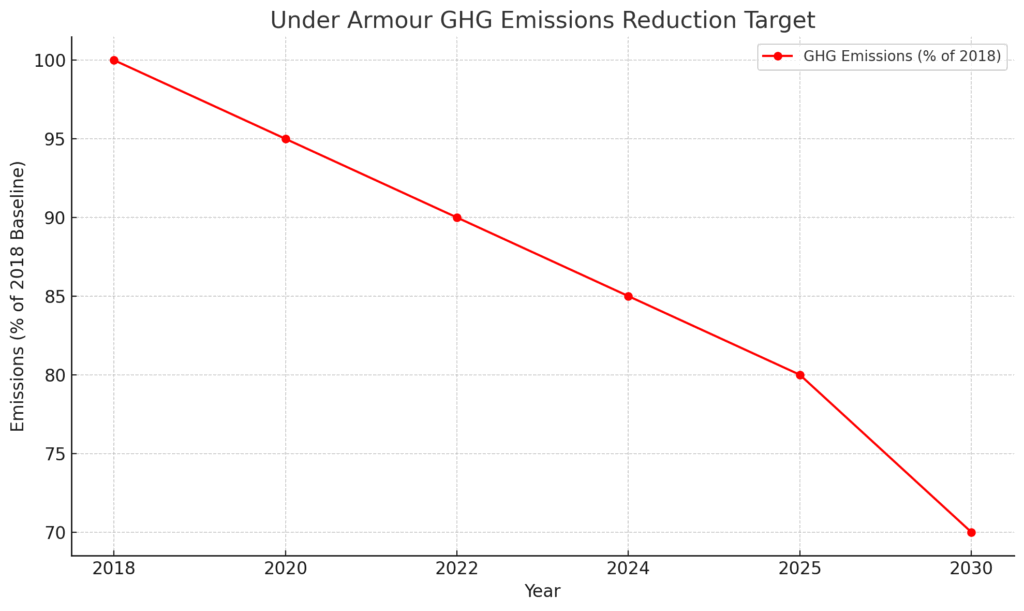
Under Armour GHG Emissions Reduction Target
Shows the projected decrease in greenhouse gas emissions relative to the 2018 baseline. By 2030, the company aims to reduce absolute Scope 1, 2, and 3 emissions by 30%.
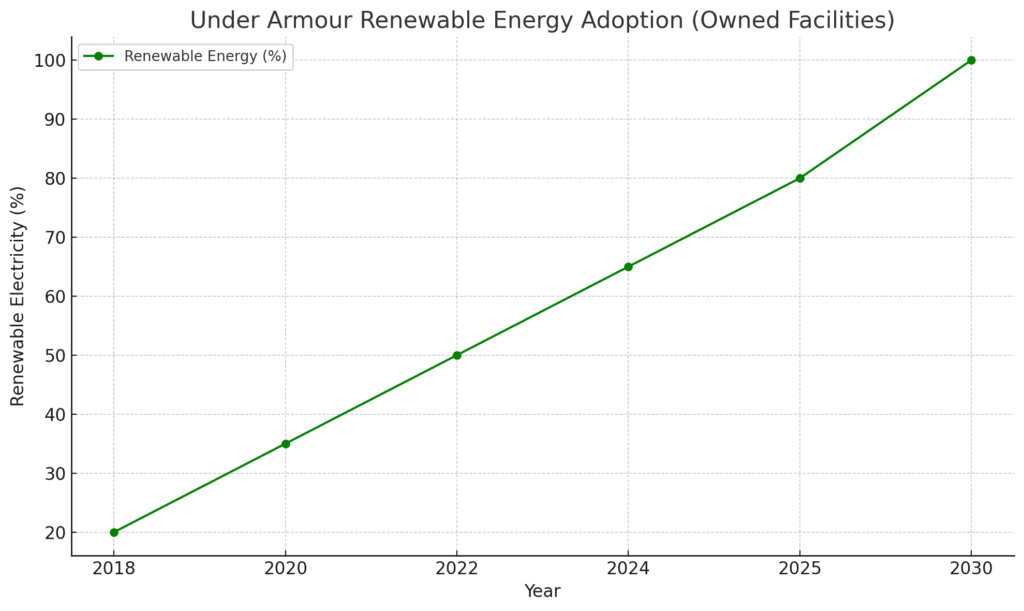
Under Armour Renewable Energy Adoption
Illustrates the company’s path to sourcing 100% renewable electricity for its owned and operated facilities by 2030, with a key milestone of 80% by 2025.
Challenges and Areas for Improvement
Despite its achievements, Under Armour faces challenges in its sustainability journey:
- Scope 3 Emissions: Managing emissions across the supply chain remains complex, requiring collaboration with suppliers to achieve reductions.
- Material Innovation: Developing sustainable materials that meet performance standards is an ongoing challenge.
- Consumer Engagement: Encouraging consumers to participate in recycling programs and adopt sustainable practices is essential for circular economy success.
Future Plans and Long-Term Goals
Under Armour’s long-term sustainability objectives include:
- Net-Zero Emissions by 2050: The company is committed to achieving net-zero GHG emissions across its value chain.
- Circular Economy Implementation: By 2030, Under Armour aims to fully integrate circular systems into its product lifecycle.
- Enhanced Transparency: The company plans to increase transparency in its supply chain and sustainability reporting.
Comparisons to Industry Competitors
When compared to competitors like Nike and Adidas, Under Armour demonstrates a strong commitment to sustainability:
- Nike: While Nike has set ambitious sustainability goals, Under Armour’s focus on circular systems and renewable energy sourcing positions it as a proactive player in the industry.
- Adidas: Adidas has made significant strides in sustainable materials, but Under Armour’s integration of AI in supply chain optimization offers a competitive edge.
Under Armour’s comprehensive sustainability strategy reflects a deep commitment to environmental stewardship and social responsibility. By setting clear goals, embracing innovation, and fostering transparency, the company is making meaningful progress toward a more sustainable future. Continued investment in renewable energy, circular economy practices, and technological advancements will be crucial for Under Armour to achieve its long-term objectives and maintain its leadership in sustainable athletic apparel.
Sources
Sources:
https://about.underarmour.com/en-us/Purpose/Sustainability/environment.html https://about.underarmour.com/en-us/Purpose/Sustainability.html https://about.underarmour.com/en-us/stories/2023/09/under-armour-publishes-fy2023-sustainability—impact-report-.html
https://about.underarmour.com/en-us/Purpose/Sustainability/2023-sustainability-and-impact-report/teammates-and-suppliers-workers.html
https://stage-about.underarmour.com/en-us/Purpose/Sustainability/sustainability-reports/issue-stakeholder-management.html
https://sciencebasedtargets.org/companies-taking-action
https://ellenmacarthurfoundation.org/

